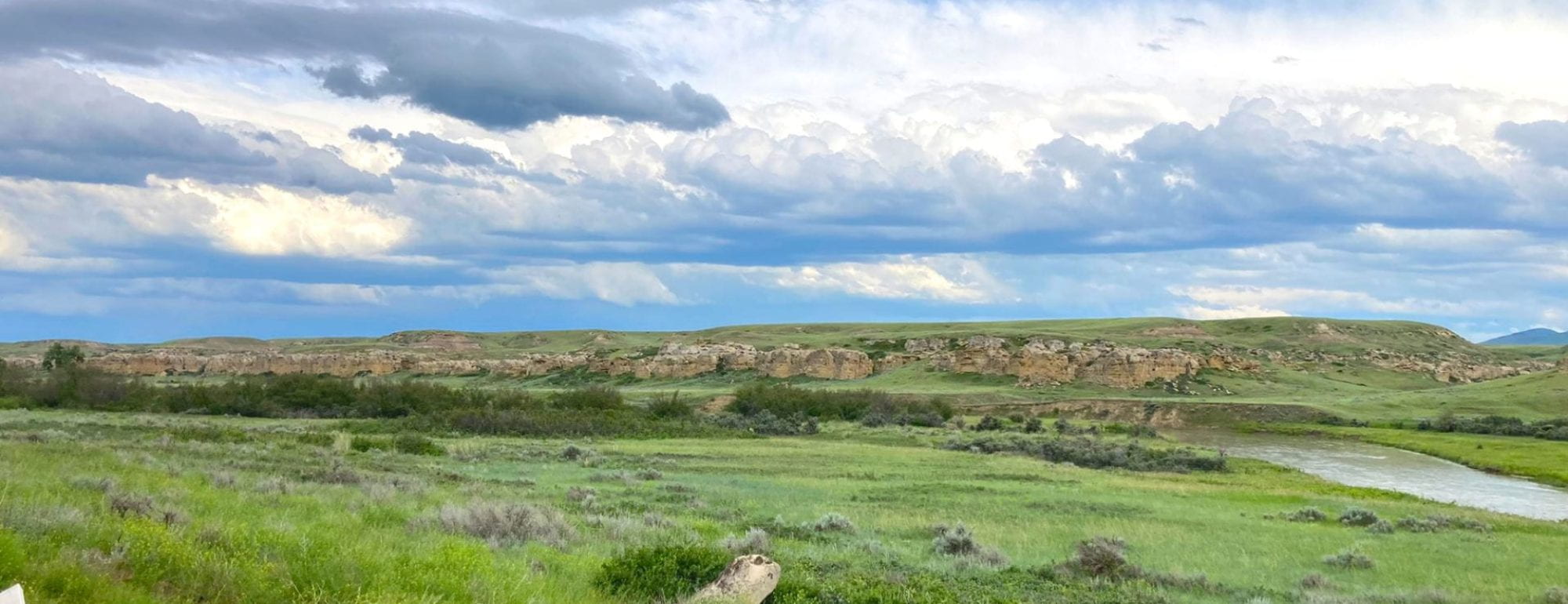I study the relationships between people and animals in North America’s past. My most recent work, funded by the U.S. National Science Foundation, explored spatial variability in Great Plains bison hunting economies during the hot Middle Holocene period (~8200–5000 years ago). Previous research shows that during the Middle Holocene, bison became smaller, evolving from their Pleistocene ancestors into a form more closely resembling the animals we know today. At the same time, the region’s Indigenous peoples developed new food processing technologies, pursued new plants and animals, and likely changed how they settled on and moved across the landscape. It has been long suspected that Middle Holocene warming drove a decline in bison populations, prompting people to explore new resources and technologies. However, a convincing link between these two processes has been elusive.
Using stable isotope data gathered from bison teeth, I found that Middle Holocene warming likely had strong ecological impacts on the central and southern Plains. In contrast, I did not detect any differences between the Middle and preceding Early Holocene (~8200–11,700 years ago) on the northern Plains. It is unlikely that these two periods were identical in the north, but any warming was not detectable given the sample of sites and climatic impacts to Middle Holocene bison populations may have been minimal. Interestingly, this appears consistent with a recent independent genomic study of North Dakota bison showing demographic stability in the Middle Holocene.
Archaeologists have observed that globally, people in the past often responded to large game scarcity by doubling down and extracting more nutrients from each hunt. Hunters can accomplish this by more extensively processing each animal for marrow and grease, which is visible in the archaeological record through bone fragmentation patterns. Curiously, my work revealed that Middle Holocene bison bone fragmentation in archaeological sites increases moving north—people more extensively processed these animals for marrow and grease where they were most abundant, not where they were scarce. It has been previously argued that grease rendering first emerged in the north at this time, and my research supports this at a regional scale with assemblage level data. However, it appears unrelated to long term warming trends. Rather, some other drivers might be responsible, such as increased trade, new social incentives, or the need for storable pemmican.
 |
A group of bison resting during the middle of a summer day, Custer State Park, SD.
|
 |
The distal end of a bison humerus from a Middle Holocene archaeological site. Note the circular radiating cracks at the bottom of the broken margin. This is where the bone was struck with a tool, such as a hammerstone, to extract marrow. |
There are parallels between the Middle Holocene and today, where climate change now threatens the future of the people and ecosystems of the Great Plains. Much like the Middle Holocene, modern American bison are becoming smaller, likely as a way to cope with a warming climate. Undoubtedly, heat is not favorable for these animals, and the tribal, private, and public entities that sustain them today will likely need to adapt in the coming decades. Bison are culturally and economically important to many Indigenous communities in North America, and they play an important roll in the restoration of grassland ecosystems. As such, a better understanding of the role of climate change in the ecological history of this species is now more relevant than ever.
